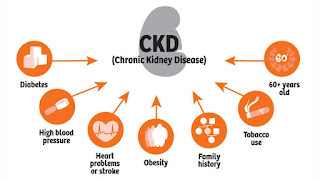best kidney hospital in hyderabad | Prostate Cancer | ainu
What Is Prostate Cancer?
Cancer starts when cells in the body begin to grow out of control. Cells in nearly any part of the body can become cancer cells, and can then spread to other areas of the body. To learn more about cancer and how it starts and spreads, see Prostate cancer begins when cells in the prostate gland start to grow out of control. The prostate is a gland found only in males. It makes some of the fluid that is part of semen.
The prostate is below the bladder (the hollow organ where urine is stored) and in front of the rectum (the last part of the intestines). Just behind the prostate are glands called seminal vesicles that make most of the fluid for semen. The urethra, which is the tube that carries urine and semen out of the body through the penis, goes through the center of the prostate.
Types of prostate cancer
Almost all prostate cancers are adenocarcinomas. These cancers develop from the gland cells (the cells that make the prostate fluid that is added to the semen).
Other types of cancer that can start in the prostate include:
- Small cell carcinomas
- Neuroendocrine tumors (other than small cell carcinomas)
- Transitional cell carcinomas
- Sarcomas
These other types of prostate cancer are rare. If you are told you have prostate cancer, it is almost certain to be an adenocarcinoma.
Some prostate cancers grow and spread quickly, but most grow slowly. In fact, autopsy studies show that many older men (and even some younger men) who died of other causes also had prostate cancer that never affected them during their lives. In many cases, neither they nor their doctors even knew they had it.
Possible pre-cancerous conditions of the prostate
Some research suggests that prostate cancer starts out as a pre-cancerous condition, although this is not yet known for sure. These conditions are sometimes found when a man has a prostate biopsy (removal of small pieces of the prostate to look for cancer).
Prostatic intraepithelial neoplasia (PIN)
In PIN, there are changes in how the prostate gland cells look when seen with a microscope, but the abnormal cells don’t look like they are growing into other parts of the prostate (like cancer cells would). Based on how abnormal the patterns of cells look, they are classified as:
- Low-grade PIN: The patterns of prostate cells appear almost normal.
- High-grade PIN: The patterns of cells look more abnormal.
Low-grade PIN is not thought to be related to a man’s risk of prostate cancer. On the other hand, high-grade PIN is thought to be a possible precursor to prostate cancer. If you have a prostate biopsy and high-grade PIN is found, there is a greater chance that you might develop prostate cancer over time.
PIN begins to appear in the prostates of some men as early as in their 20s. But many men with PIN will never develop prostate cancer.
For more on PIN, see Tests to Diagnose and Stage Prostate Cancer.
India has one of the world’s largest and fastest-growing populations of aging men. While it is commonly known that men in this age group suffer from ailments like type 2 diabetes, high blood pressure and cholesterol, even cataract, the huge burden of morbidity imposed by a condition called benign prostatic hyperplasia or BPH – suffered by many of these very men, is largely unheard of by the public. BPH is an age-related enlargement of the prostate which creates an obstruction to the outflow path of urine, producing troublesome symptoms that lead to the increased daytime frequency of urination, getting up frequently from sleep at night to pass urine, straining to improve the weak stream of urine, and feeling incompletely satisfied even after having just passed urine.
Research data from India show that almost 65% of men aged 40 years and above suffered from these annoying symptoms. Then why are most of these patient’s ‘unseen’?
World class experts are here book an appointment



Comments
Post a Comment